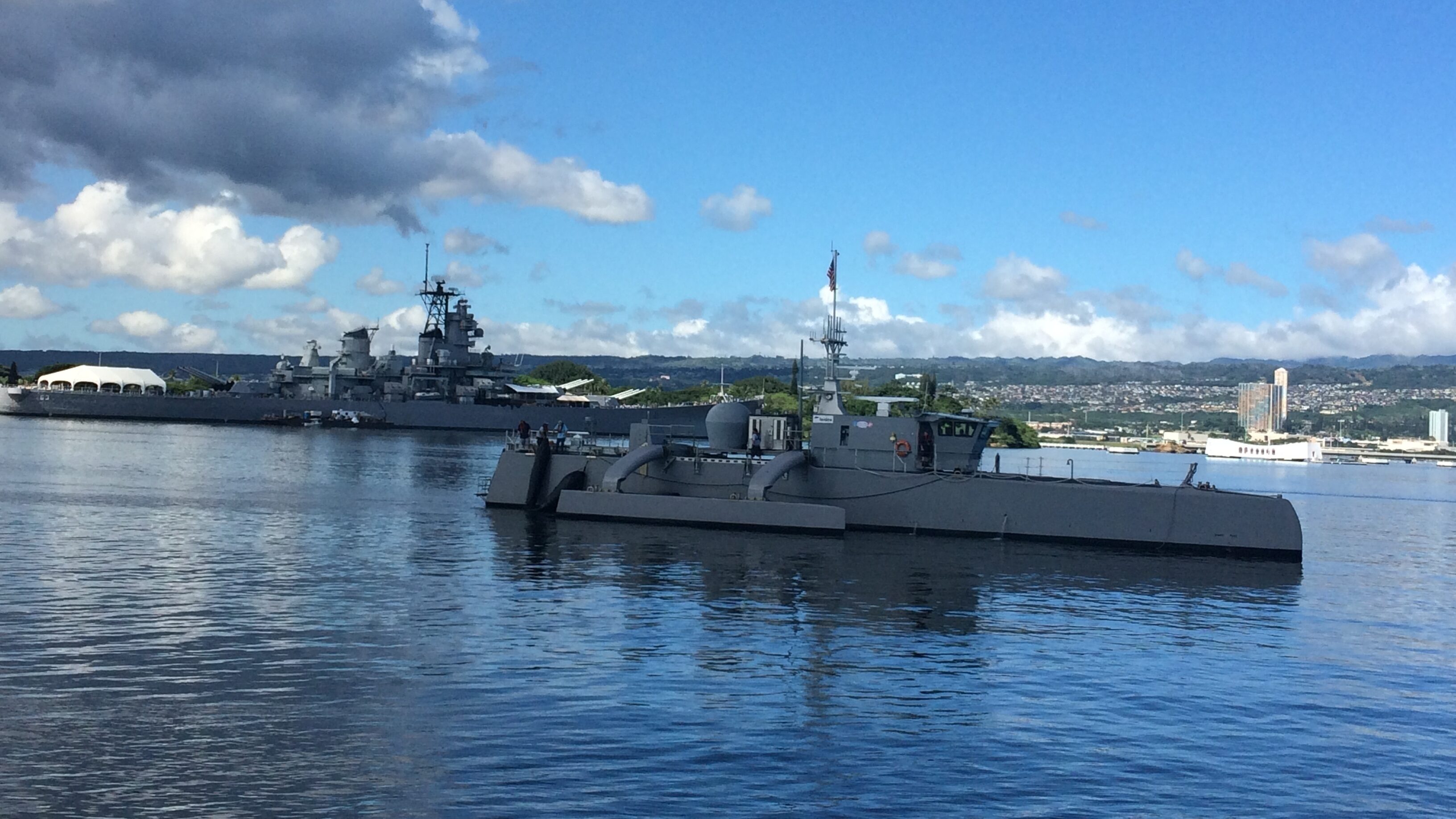
The experimental unmanned Sea Hunter is the forerunner of the Navy’s proposed fleet of robotic warships. (U.S. Navy photo)
WASHINGTON: Chief of Naval Operations Adm. Michael Gilday today cast doubt on whether the Medium Unmanned Surface Vessel will have a place in the service’s fleet in the near future, citing work done by US 5th Fleet as having “changed my thinking on the direction of unmanned” ships.
During a virtual event at the US Naval Institute and co-hosted by Center for Strategic and International Studies, Gilday was discussing what platforms and capabilities the service is developing for the 2030s and beyond.
“Flight III DDGs [destroyers] will pave the way” for surface fleet capabilities, he said. “2030 is when we’re looking at DDG(X)… By that time, I think we’ll be in a better place with [the Large Unmanned Surface Vessel]. I don’t know if we’ll have a medium unmanned or not.”
The Navy’s top admiral said the work done by Vice Adm. Brad Cooper, US 5th Fleet chief, has led him to believe the service may be able to “close capability gaps with small expendable unmanned” vessels off of any platform. Cooper leads Task Force 59, a special panel inside the Navy, designed specifically to experiment with and test unmanned platforms.
Gilday followed those remarks with a hedge, however, suggesting the program’s fate is not predetermined.
“There may be room for [larger platforms],” he added. “I’m not saying we don’t need an MUSV. I’m saying that it’ll cause us to consider numbers and what potential payloads they’re going to have.”
Still though, any doubts the service’s top admiral cast on MUSV, a flagship unmanned surface vessel program, could be significant. The service’s research and development arm, the Office of Naval Research, has for many years worked on, developed and boasted about Sea Hunter, MUSV’s veritable experimental predecessor.
Further, the service awarded L3 Harris Technologies in August 2020 a contract worth up to $281 million to deliver nine MUSVs.
Gilday’s remarks on MUSV come weeks after the Pentagon published its fiscal 2023 budget request. The Navy’s portion of the budget includes killing a premiere unmanned undersea vehicle program, Snakehead, Breaking Defense reported.
The service attributed that decision to “misalignment of Snakehead [Large Displacement Unmanned Undersea Vehicle] design and procurement efforts with submarine hosting interfaces resulted in limited availability of host platforms to conduct Snakehead operations.”
The service’s FY23 budget request for MUSV includes $104 million in research and development funding.






















